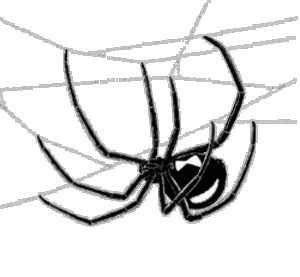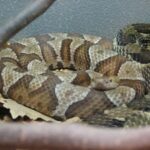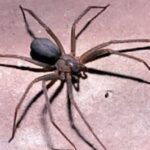A fear of spiders is one of the most common phobias in the United States. I suppose they’re a perfect candidate for producing fear-they’re hairy, they move quickly, they hide in dark places, and they have a reputation for having a venomous bite. Personally I think the majority of spider phobias stem from a belief that most spiders are capable of doing harm to people if given the opportunity. But are there enough venomous spiders in the United States to warrant such a fear?
There are only a handful of venomous spiders that reside in the U.S. and are potentially dangerous to humans. There is only one family of web-spinning spiders that poses a threat with a venomous bite, and that is the widow family. This family includes the infamous black widow as well as the brown widow. It’s the females to watch out for in the widow family, because they’re the ones with the dangerous bite. They’re also much larger than males and easier to identify. The female black widow is small, only about a centimeter in length, with a black body, and a characteristic red hourglass-shaped patch on the underside of the abdomen. Brown widows, though venomous, have a venom about one tenth of the strength of their black widow relatives. These spiders prefer warmer regions of the United States and often will live in the same place for their entire life.
Since black widows can potentially live all across the continental United States, should you be afraid of getting bitten by one? Like most spiders, black widows are frightened by humans and will only bite when molested. If you see a black widow but don’t touch it, it will not rush at you and bite you. It relies on the red coloration on its body as an effective warning to predators and will only attack if it is attacked first. Also, there have only been 63 reported cases of black widow-related deaths between 1950 and 1989. Furthermore, better availability of antivenin has reduced the chances of mortality due to a properly-responded-to bite to around 5%. In other words, your chances of dying of a black-widow bite are very low.
The other class of venomous spiders in the United States is hunting spiders. These spiders don’t weave webs to trap prey, but rather rely on ambush tactics. Perhaps the most dangerous hunting spider in the United States is the brown recluse. These are small spiders less than a centimeter long, brown, with a distinctive violin-shaped design on their upper abdomen. Like the widows, brown recluses prefer warmer regions of the Southern and Western United States. They build irregular webs for shelter in dry, dark places like woodsheds or garages. Like the black widow, the brown recluse does not aggressively attack people and will usually only bite when pressed against skin (such as if it is caught in clothes). Thus, brown recluse hospitalizations are relatively rare, although if you are bitten, you should seek immediate medical treatment and should collect the spider if possible.
There are other venomous hunting spiders that could potentially pose a danger to humans in the United States. A large spider called the hobo spider has similar habits to the brown recluse and lives in the Northwestern United States. The yellow sac spider inhabits most of the United States and can potentially deliver a dangerous bite, but most cases of yellow sac spider bites have caused only localized pain and discomfort. This is a nocturnal spider that will only bite in self-defense when disturbed. If you suspect that you’ve been bitten by any of the aforementioned spiders, then try and capture the spider if at all possible and seek medical attention immediately.
Are these four spiders cause for alarm in your day-to-day life? No. More than 3500 species of spider live in the United States. If only four of those 3500 have venom dangerous enough to affect humans, then I’d say you have bigger things to worry about in life.




